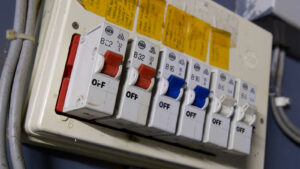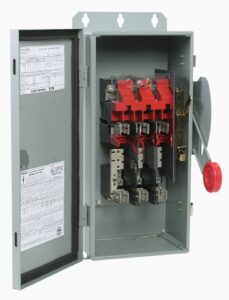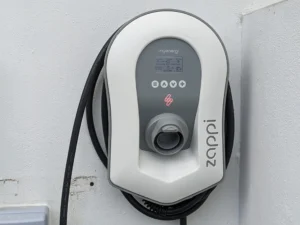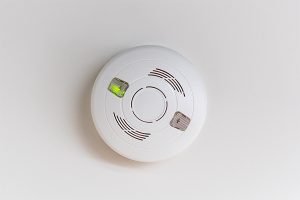Both these devices act as safety devices to prevent damages in your home relating to an electrical malfunction.
Circuit Breakers
Many homes are equipped with circuit breakers or fuses in the main switchboard to protect electrical wiring from being overloaded. When power points are overloaded, a circuit breaker protects the system from short-circuiting or overcurrent’s. The circuit breaker will cut the power once it identifies an overload or a high current fault in the event of too many appliances plugged into a power point.

Safety Switches
Safety switches protect a person in case of them poking something in a socket. They prevent someone from getting an electrical shock or electrocution due to electrical faults in the system. A safety switch detects any problems that may pose a risk regarding personal safety. It scrutinizes the flow of electricity through the circuit and identifies any discrepancies in the neutral and live wires which happens when the current travels through something else, i.e., a person potentially resulting in an electrical shock. As soon as a problem arise that may jeopardize your personal safety, the safety can switch off the power within 0.03 of a second before any damage occurs. A safety switch looks similar than a circuit breaker but has a test button.
A Safety switch or residual current device (RCD) has become a compulsory item to be installed in houses to protect against fires or electrocution due to electrical faults.
You may be required to install more than one safety switches in your home. According to Victorian legislation, safety switches need to be installed on the lighting circuit as well as the power point circuit in a new home. However, many older homes only have coverage on the power point circuit or don’t have a safety switch at all.

Homeowners and landlords are now advised by Electrical safety regulators to have a safety switch installed on each circuit including air conditioning, oven, lights, hot water system as well as pool equipment circuit to ensure full power system protection for residents.
Conclusion
It is critical to understand the dissimilarity between safety switches and circuit breakers and the general misconceptions about the two. The biggest predicament that stems from confusing the two is that people think they have both installed when this is not the case. In short, the main difference between a safety switch and circuit breaker is that the safety switch protects a person from electrical shock when coming in contact with live appliance parts or live wires while a circuit breaker protects the electrical system and wiring in your house.
Contact us today on (08) 9220 5201








